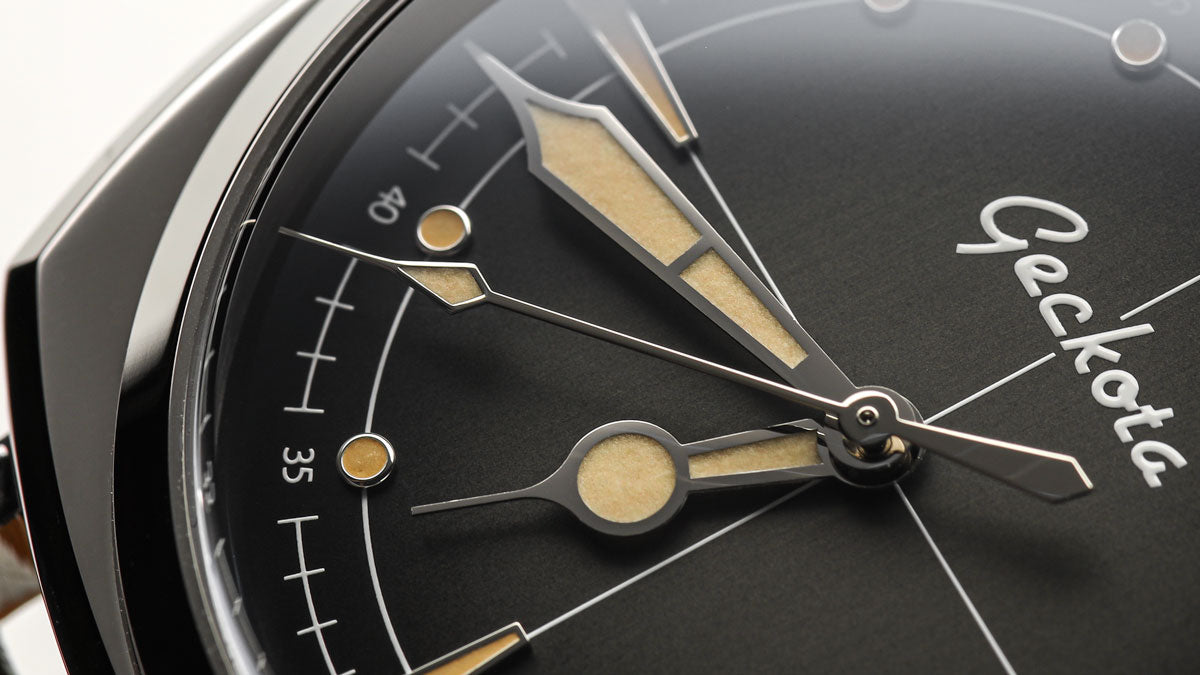WORLDWIDE SHIPPING ALL TAXES PRE-PAID
WORLDWIDE SHIPPING ALL TAXES PRE-PAID
WORLDWIDE SHIPPING ALL TAXES PRE-PAID

May 26, 2022 4 min read
A helpful guide on how to change any kind of watch strap using a spring bar tool.
Before you change your watch strap you will want to know the lug width of your watch, which you can do in a few different ways:
When changing watch straps it's best to have a spring bar tool handy. We recommend the Professional Spring Bar Tool, for both value for money and excellent quality. A benefit of this spring bar tool is its versatility. One end of the tool holds a wider fork for leather watch straps and a thinner fork on the other end for metal bracelets. You can switch out the thinner fork end with a flat-ended pin, ideal for attaching the bracelet back onto the watch.
When changing your strap it’s best to do so on a flat surface, laying your watch on a cloth or other soft surface which will help keep your watch still and prevent the crystal from getting scratched. For added protection against scratches, consider taping the watch lugs with masking tape.
Many modern straps and bracelets come with quick-release straps. This makes removing spring bars easy and tool-free, with no risk of them flying across the room. Simply squeeze the protruding part of the bar inwards until the strap releases. You may also need to apply light pressure to the strap if it doesn’t detach immediately.
Some watches have drilled lugs, which makes removing straps a lot easier. For these watches simply insert the rounded pin of your spring bar tool into the drilled hole making sure it’s in properly. Then gently push the tool to release the spring bar. You may have to wiggle the strap a little at the same time. Set the spring bar aside somewhere safe for later.
On bracelets, you’ll see that the end links of the bracelet (where it attaches to the watch head) will have cut-away slots allowing you to partially see the spring bar.

Use the v-shaped/forked end of your spring bar tool and slot it in at the outside edge of the slot. If the spring bar tool you have has two different forked ends, use the smaller, thinner end for removing a bracelet. Then, slowly slide the tool inwards until you feel the shoulders/flange.
Then, gently pry the spring bar out by pulling it towards the centre of the watch until you hear/feel it release. Depending on the bracelet you may need to apply some pressure to the underside of the bracelet to get it to release.
Occasionally you may also encounter a stubborn bracelet and the spring bar may only partially release. If that’s the case, you will need to use the tool to release the spring bar on the opposite side also.
Lay the watch face down, then carefully position the v-shaped end of the spring bar tool so that it slots between the end of the strap and the inside of the lug. Applying light pressure against the spring bar, gently pry the spring bar out by pulling it towards the centre of the watch until you hear/feel it release.
Simply position one end into the lug hole. Once secure, position the other side of the spring bar so that it roughly sits over the lug and then squeeze the bar inwards whilst positioning the strap until you feel/hear the spring bar snap into place. Give the strap a light tug to make sure it's secure.
Place one end of the spring bar fully into one of the lug holes. Once in place, position the other side of the spring bar so that it roughly sits over the lug.

Using the spring bar tool, compress the spring bar whilst lowering the end into place, aiming for the lug hole. Getting the second end of the spring bar into place is not always easy, so you may have to carefully move the strap around within the confines of the lug until you feel the spring bar locate and snap into place. Give the strap a tight tug to ensure they’re secure.
When fitting a watch strap, make sure the buckle end is attached on the 12 o’clock side of the watch and the tail-end at 6 o’clock. For bracelets with a fold-over clasp, ensure that the section of strap with the visible part of the clasp (often with the brand’s logo on) is fitted to the 12 o’clock side of the watch.
Place your NATO strap and watch on a flat surface, ensure the buckle end of the strap is placed down on the left. Also ensure the watch displays the 12 o'clock position on the left (nearest to the buckle).
Thread the non-buckle end of the strap underneath the left lug gap, then pass the strap end through the right lug gap. Pull the strap end tight.
Position the watch so that it is between the buckle on the left and loops on the right. Pass the non-buckle end of the strap through the remaining loops on the right.
Your watch is now securely fastened to your NATO strap, however, do a final check and ensure all loops are threaded through correctly and the watch displays 12 o'clock position at the top.

February 08, 2024 2 min read
Read More